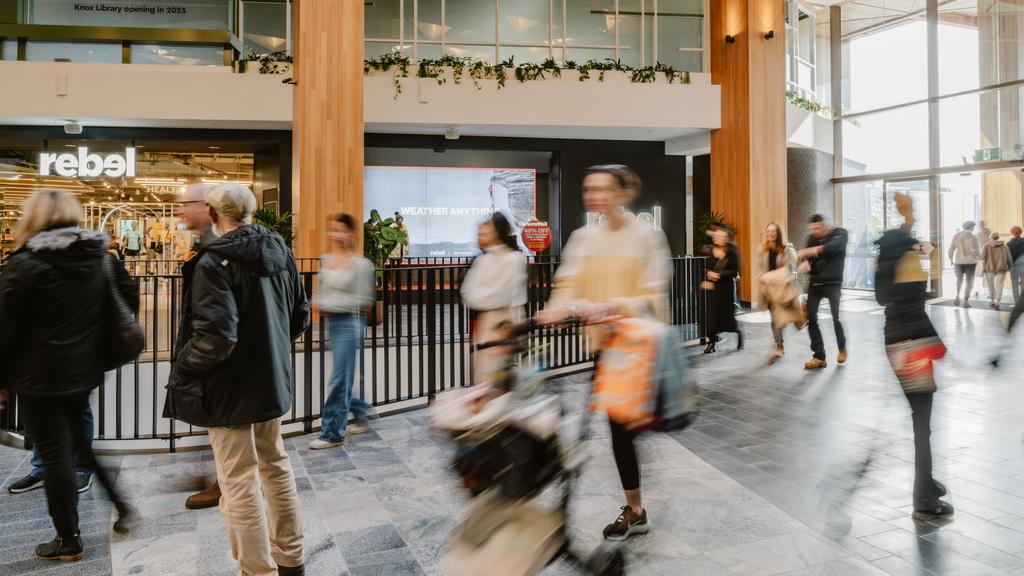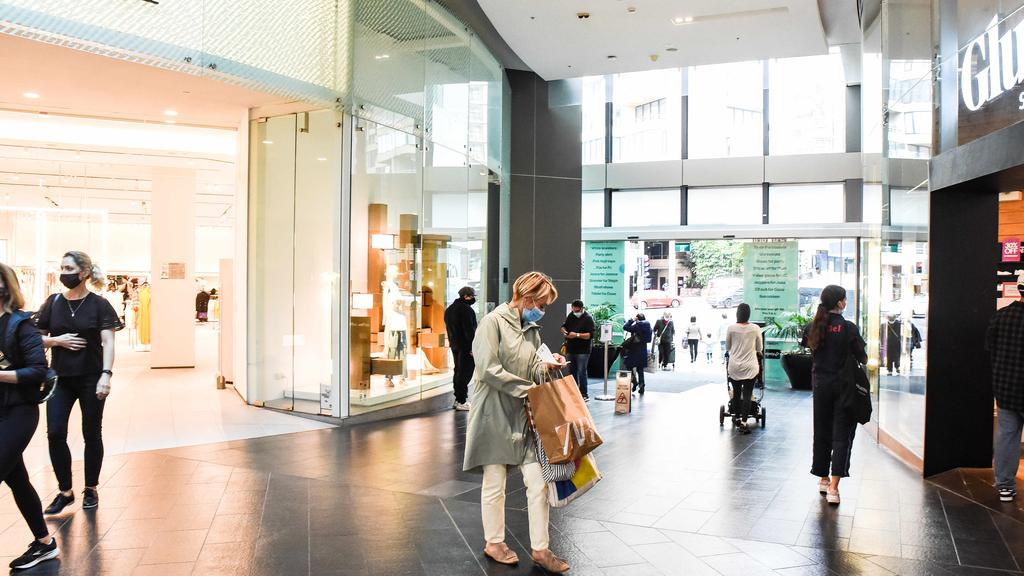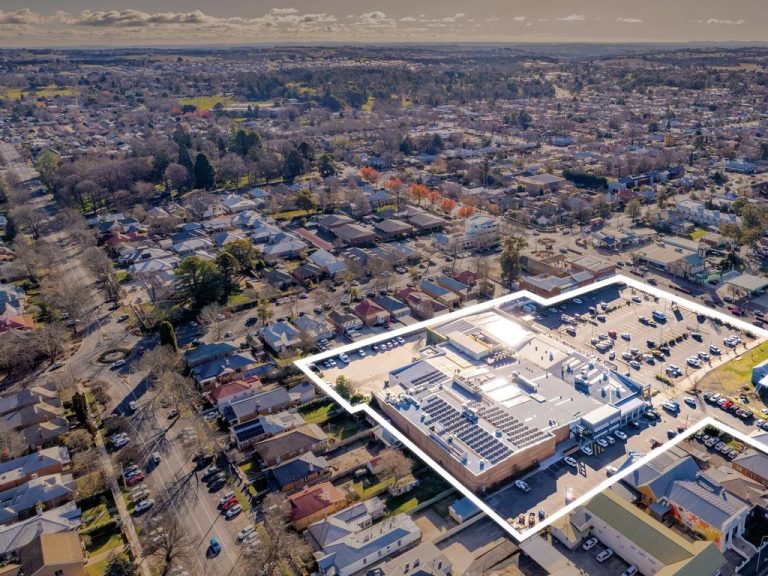Why the best-in-class mall rents are recession resilient and attractive

For many, the call for an Australian recession would include the expectation that shopping centres will bear a significant proportion of the downturn, but such an expectation may not reflect the eventual reality.
Apart from the very short Covid-induced downturn in 2020, Australia has largely avoided a material economic recession since 1990-91, where unemployment peaked at almost 12 per cent.
As central banks around the world continue their crusade to deliver on their targeted level of unemployed citizens, there have been signs of some deceleration in the Australian economy. Notably, after a post-Covid surge, Australian retail sales are beginning to slow.
Indeed, for the March quarter, inflation-adjusted retail sales retracted 0.6 per cent.
As the data continues to show signs of weakness, there is a growing expectation that Australia faces its first real recession in decades.
For many, the call for an Australian recession would include the expectation that shopping centres will bear a significant proportion of the downturn. After all, most malls are home to many discretionary retailers who will almost certainly bear the brunt of an economic decline as households tighten their belts.
Yet, such an expectation may not reflect the eventual reality.
No one under the age of 50 has ever seen first-hand the impact of a recession on the Australian share market. As such, any judgment around the performance of shopping centres based on “intuition” during a recession may be misplaced.
Fortunately, this writer was covering the listed REITs (known as listed property trusts) at the time.
The overriding investing theme in the early 1990s was to invest in “earnings certainty” – and at the time, that included listed mall REITs. And the go-to exposure at the time was Westfield Trust (the predecessor to today’s Scentre Group).
That may seem counter intuitive, however, equally fortunately, this writer also retained many of the old annual reports of the trust. The key financial ratios during this period supported the “earnings certainty” story that made the trust an investor-favourite in the early 1990s.
Australia has been fortunate to avoid significant economic downturns since the 1990-91 recession.

One advantage retail landlords have today is that in-store retail sales boomed post-Covid. Picture: NCA NewsWire / Flavio Brancaleone
However, national economic growth has not been without its bumps. The Asian financial crisis (1998), the post Goods and Services Tax retail slump (1991), the global financial crisis (2008-09) and Covid (2020) have all presented economic challenges.
Of course, it can be dangerous to assume past performance is a guide to future performance.
Much has changed in the shopping centre industry over the past 20 years. Household debt has ballooned, online retail is taking market share from stores, and consumer behaviour is always changing. Can retail rents maintain resilience as consumers become more cautious?
One advantage retail landlords have today is that in-store retail sales boomed post-Covid. And given most specialty leases are five to seven years in duration, rents have lagged economic and rental reality. This means most malls have passing rents below market rents.
In a recent Scentre call, management indicated rent as a proportion of sales of specialty tenants is 16 per cent compared to 18 per cent pre-Covid. Or, said another way, retail sales can fall 10 per cent, and the rent/sales ratio would reflect a normal pre-Covid world. We see the same dynamic in the US.
However, the best-in-class malls have another advantage – which becomes apparent when analysing unit-level economics of an average retail store. To be clear, not all shopping centres performed well in the early 1990s. Properties without scale and low sales productivity lost tenants, and income declined. Yet, it still seems a paradox that during a severe recession, the most secure investment was a regional shopping centre.
To understand these dynamics better, it’s useful to look at what happens to overall store profitability during a downturn.

Quay Global Investors principal Chris Bedingfield.
Firstly, it should be stated that the vast majority of rental income from a shopping centre is from base rent (circa 95 per cent), and therefore immune to short-term sales turnover. However, a sustained decline in sales can push tenancies to bankruptcy and/or a negotiated lower rent.
In the event of, say, a 10 per cent decline in retail sales, high-volume malls maintain their profitability even at the same level of rent, while low-volume malls become unprofitable. During recessions, cuts need to be made, and in this scenario the low-volume stores are unlikely to renew their lease, or, at the very least, demand a rent cut.
When looking at the occupancy costs for both tenancies, this also seems counter intuitive. Retailers in high-volume malls have a significantly higher occupancy cost ratio (rent/sale) than smaller malls. Since this measure is used to assess affordability, investors can be forgiven for thinking the mall with the lower occupancy cost is relatively immune to a downturn.
But the opposite is true. At the store level, low-turnover malls has a number of disadvantages. Firstly, generally lower gross profits margins and lower absolute gross profits (need more discounts to attract sales/volume). Secondly, some level of fixed costs (labour/spoilage) at the store level, so the lower margins are leveraged to lower sales.
In 1990-91, vacancy rates in these low-turnover malls increased, while the most productive malls maintained near full occupancy, and as the Westfield Trust financials highlight, maintained and grew rents while sustaining asset values.
It has been more than 30 years since Australia’s last deep recession, and it feels like some of the investment lessons have been lost in the passage of time.
While it seems intuitive to think retail landlords will disproportionally suffer a deep recession, history and analysis suggests these assets are likely to maintain profitability amid a sea of profits downgrades across the broader equity market.
If the 1990-91 market performance is repeated, and a desire re-emerges to invest in earnings certainty, retail REITs may be the best place to be.
Chris Bedingfield is principal and joint managing director of Quay Global Investors







